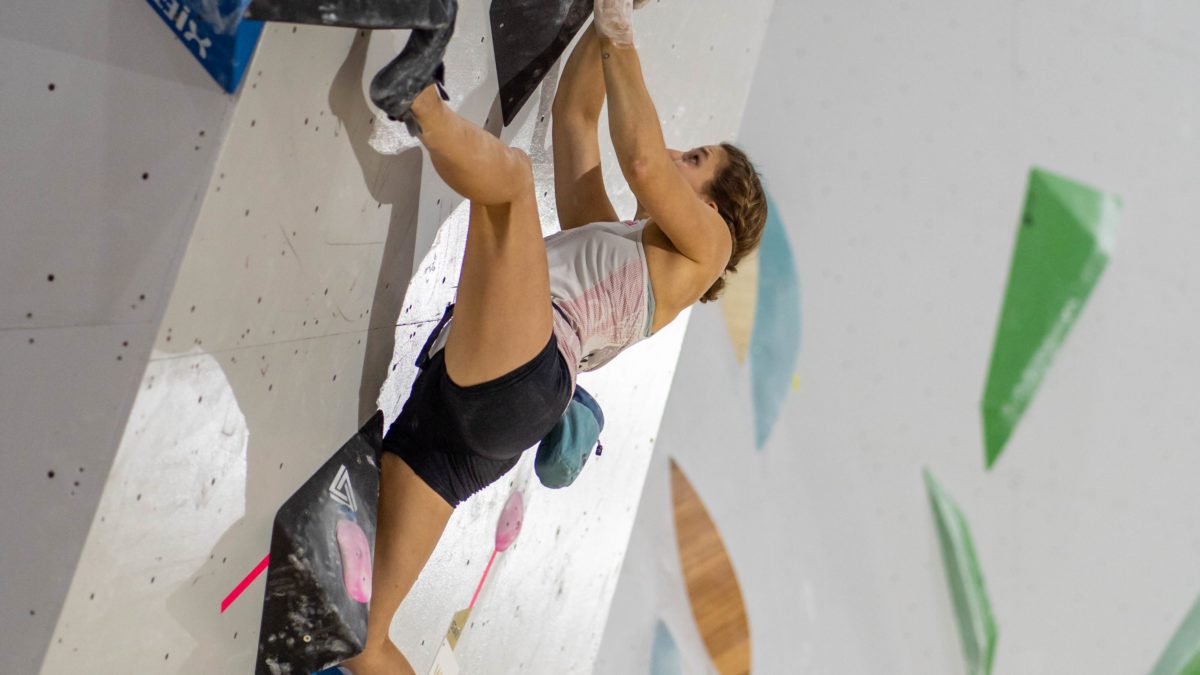Climbing’s Combined Olympic Format Promises a Brutal Day in Tokyo
Sean McColl is the only Canadian, so far, that is competing at the 2020 Tokyo Olympics

Fingernails scrape at the back of the hangboard. Almost floating, Canadian athlete Sean McColl is focused. It seems effortless, but his fingers give him away. His fingers sweat. It’s July. A moment passes. He is off the board. In another he is on, veins and tendons snapping along the backs of his hands as they engage, crushing the edge underneath his weight. It appears difficult. That is the point.
McColl is currently training as Canada’s first Sport Climbing Olympian. With the first international combined climbing competition marking the beginning of the Olympic season for some, questions mount as to the controversial competition structure. Normally, climbing competitions are limited to one of three disciplines: bouldering, lead and speed. In the Olympics, all three disciplines will be included in a single event: speed then bouldering then lead.
Bouldering and lead are the most popular of the three disciplines, but even still, the IOC has decided that speed should also be included to round off this three-event competition. For many diehard rock climbing fans and athletes, this is an affront to the nature of the sport. Climbing is classically about the inherent difficulty that lies in movement and endurance. Bouldering and lead competitions exemplify the aspects of climbing that people appreciate the most as they are each scored on the completion of the most difficult moves on a set route.
For bouldering, climbers move between a set of four to five boulders. In this competition, each climber will be given four minutes to top each boulder problem in as few tries as possible. On lead, the climber is given one attempt to climb as high as possible on an exceptionally difficult, long, and tall rope-protected route. The similarities between these disciplines are obvious to those rock hard climbing fanatics who appreciate difficulty above all else. Then there is speed.
Speed is an aspect of climbing that most athletes ignore, seeking performance over power. It revolves around climbing a relatively easy route, 5.10a – 5.10c, as fast as possible, similar to a vertical sprint. Speed is exceptionally difficult in its own right, simply due to the raw power required to leap up a 15-metre vertical face in 5.6 seconds. There are those who believe speed does not have a place in the 2020 Olympics due to its lack of applicability anywhere else in rock climbing, but speed climbing is just another form a movement that the best rock climbers in the world should be able to learn for the purpose of competition.
Since there are a great number of top end bouldering and lead climbers without experience in speed, it is difficult to predict a winner in Tokyo. Clearly, being the strongest is only part of what it will take to be an Olympic champion. It is this unprecedented level of competition that excites 31-year-old Sean McColl. To him, “It feels like a weird dream that I might wake up from at any given second.” A seemingly natural response for an athlete pioneering his sport on the Olympic stage.
With little more than a bag of chalk and a pair of climbing shoes, the athletes will meet at the Aomi Urban Sports Park on the Tokyo Bay south of Tokyo, Japan. In many ways, this will be the world’s first popular introduction to the world of climbing. Perhaps the quiet before the storm will steady the nerves of those attempting to become the first gold medalists in climbing’s history.



